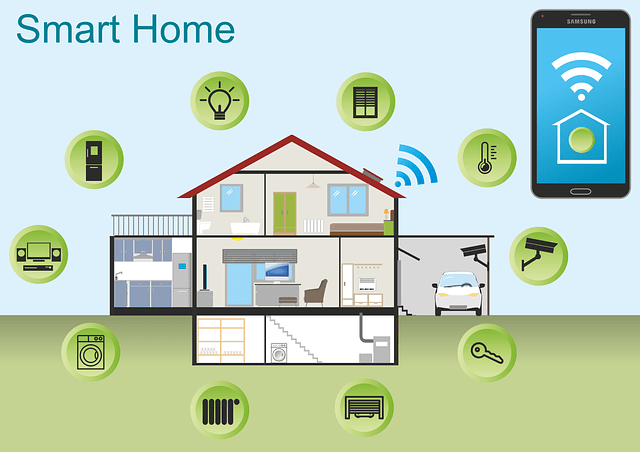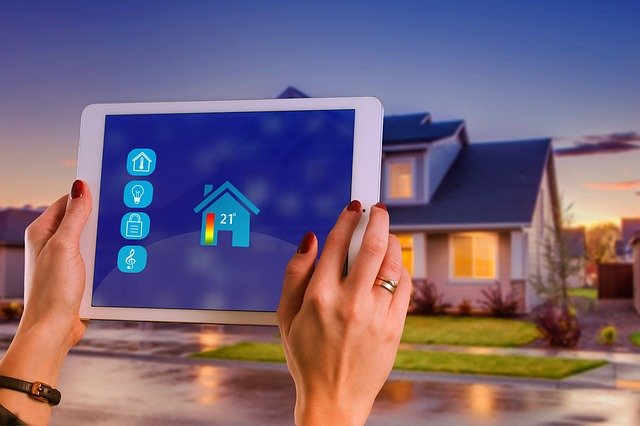As our lives become increasingly digitized, it is only natural that our home becomes smarter, too. It is not surprising then that many people are now looking into smart home tech solutions to build a smarter life at home.
Smart home integration systems link appliances, switches, and gadgets to a single hub, allowing you to operate them conveniently from a central point. It also gives homeowners the ability to improve security, enhance indoor comfort, and save energy. You can easily check the status of all your devices and get real-time updates on anything in your home.
Some of the examples of smart home products include:
- Smart TVs
- Smart lighting systems
- Wi-Fi-enabled smart thermostats. These include Nest from Nest Labs Inc., allowing users to remotely access, monitor, and regulate home temperatures.
- Smart locks and garage-door openers
- Smart security cameras
- Kitchen Appliances
- Household system monitors
Choosing Smart Home Ecosystems
The first place to start is your digital assistant. This is because these ecosystems are crucial in connecting your devices. This means you have to factor in compatibility and the multiple features available.

Some of the available smart home systems include:
Amazon Alexa
There are two types of Alexa devices:
- Smart speakers and other devices that have Alexa built-in
- Devices that operate with Alexa only. You can manage these with your voice from another Alexa device. It’s a crucial distinction, so check for goods that say “Works with Amazon Alexa” on the packaging. Alexa can also recognize and operate items on your home network that it’s compatible with.
Apple Homekit
The Homekit brings together different smart home apps on your smartphone that don’t necessarily sync with one another.
Google Assistant
There are two types of Google Assistant devices:
- Those with the Assistant built right in that you can talk to (a list which includes smart phones and Chrome books), and
- Those with which it can sync and control
The app can—
- Play music
- Display news and weather forecasts
- Manage other smart home devices and appliances
- Set timers and reminders, and
- Make and receive phone calls
For customized calendars and music playlists, you can link Google Nest speakers for multi-room audio, and you can have up to six distinct users on one network.
Samsung Smart Things
Samsung Smart Things is a free-for-all environment. It’s a product of Aeotec that features radios for both the Zigbee and Z-Wave protocols, so it’ll work with any device that isn’t SmartThings-branded.
The app has a simple interface and structure. This design enables you to control individual devices and groups of instruments in rooms seamlessly.
Smart Speakers
Smart speakers let you operate smart home gadgets, listen to music, and have voice assistants that can answer your most basic, obvious, or perplexing queries. They also come with AI assistants like Alexa, Siri, and Google Assistant.
Other than play music, smart speakers—
- Provide weather updates
- News updates, and
- Hands-free management of your smart home (such as your bulbs or smart locks)
Some of these examples include the Amazon echo that you can use for music streaming, making orders online, and controlling your smart home.
Compared to Apple Homekit and Google Assistant, Amazon Alexa has a slight edge in the total number of compatible products out there to choose from. It offers a dependable digital assistant and a wide range of devices to choose from.
The Google Assistant’s intelligence is believed to be superior. However, when it comes to automation, Apple HomeKit has an added advantage. As of now, there aren’t as many HomeKit-enabled products on the market, and Apple only provides one Siri voice-enabled speaker type.

Smart Thermostat
Smart home heating systems do more than just change the heat or cold temperatures in your home. You have the option to adjust it remotely if your phone connects to a mobile network or wi-fi.
Some smart thermostats have smart features like motion detectors or occupancy sensors. These detect whether you’re in or out of your place and automatically adjust the temperature accordingly.
Google Nest
This constitutes multiple smart home products such as;
- Smart inbuilt or portable speakers
- Devices you use for streaming and displays
- Wireless or Analog thermostats
- Detectors for smoke at home
- Routers, and
- Luxury smart home systems including smart door alarms, camcorders and smart security locks
Smart Building Systems
This is a building type with a fair investment, effective energy management, and convenient environment. Its design enables optimal interaction between structure, system, service, and management.
Smart building systems include features like:
- Geofencing
- Out of sight sensors
- Thermostats compatible with existing infrastructures
- Thermostats recording energy usage
- Connected heating and air conditioner systems
- Power extender kits
Smart Home Lighting Systems
These can connect your LED bulbs to your Wi-Fi network. They aid in controlling color, brightness, and warmth via a smartphone application or even by using voice commands.
A smart home offers a convenient setup where you can automatically control all appliances and devices remotely with an internet connection. Platforms like your mobile phone, tablet, laptop, game console, or other networked devices make the best support systems. However, smart homes are vulnerable to hacking due to their interconnectedness.
You can limit these risks by;
- Using a strong password to secure smart appliances and gadgets
- Utilizing encryption where possible, and
- Only connecting trustworthy devices to one’s network
The ultimate goal is to connect every single appliance in your house so that you can control any device with a smartphone. The definition of a smart home can adapt to specific events, be it motion detection or presence detection. Establish a healthy relationship with your home and make it work for you and your family by building a smart home.
loading...
loading...
